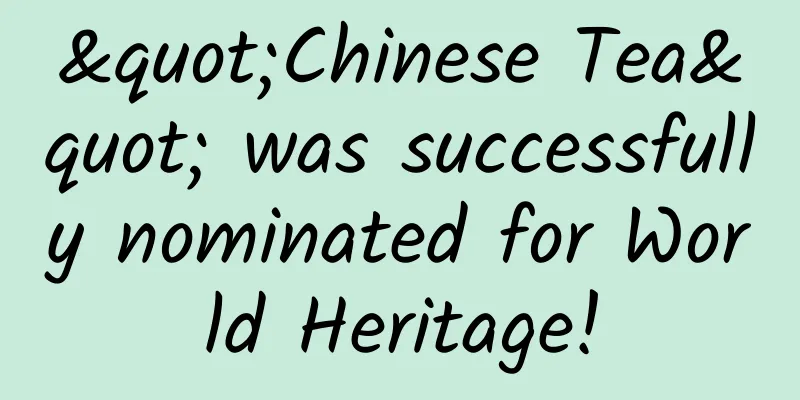"Chinese Tea" was successfully nominated for World Heritage!

|
On the evening of November 29th, Beijing time, the project "Traditional Chinese Tea Making Skills and Related Customs" submitted by China was approved by the UNESCO Intergovernmental Committee for the Safeguarding of the Intangible Cultural Heritage and was included in the UNESCO Representative List of the Intangible Cultural Heritage of Humanity. So far, China has a total of 43 intangible cultural heritage projects included in the UNESCO Intangible Cultural Heritage List and Register, ranking first in the world. Tea pickers pick tea in a tea garden in Wuyi Mountain, Fujian. Photo by Zhang Xiaoxi "Traditional Chinese tea making techniques and related customs" are the knowledge, skills and practices related to tea garden management, tea picking, tea hand-making, and tea drinking and sharing. According to local customs, tea makers use tools such as woks, bamboo plates, and baking cages, and apply core techniques such as killing green tea, steaming yellow, piling, withering, making green tea, fermentation, and scenting to develop six major types of tea, including green tea, yellow tea, black tea, white tea, oolong tea, and black tea, as well as processed tea such as scented tea. There are more than 2,000 kinds of tea, which meet the various needs of the people with different colors, fragrances, tastes, and shapes. A tea maker is withering the "Fuding White Tea". Photo by Zhu Gangqun Drinking and tasting tea permeate the daily life of Chinese people. People drink and share tea by brewing or boiling it at home, in the workplace, in teahouses, restaurants, temples and other places. Drinking tea is an important medium of communication in activities such as making friends, weddings, worshipping teachers and worshipping sacrifices. Tea is used to entertain guests, to strengthen kinship, to make good neighbors and to make friends. It is shared by many ethnic groups and provides a sense of identity and continuity for related communities, groups and individuals. "What can I do to add to the quietness after returning home? I make tea by myself in front of the small stove lamp." "I love the arrival of good guests in the cool evening, and I brew a pot of new tea with pine moss." There are countless poems and lyrics related to tea in the writings of ancient Chinese literati and poets. The project has been passed down from generation to generation, forming a systematic and complete knowledge system, extensive and in-depth social practice, mature and developed traditional skills, and a rich variety of handicrafts. It embodies the values of humility, harmony, courtesy, and respect upheld by the Chinese people, has a profound impact on moral cultivation and personality shaping, and has promoted the exchange and mutual learning of world civilizations through the Silk Road, playing an important role in the sustainable development of human society. Source: People's Daily Online |
<<: What does a tree sparrow look like?
>>: Both are made of carbon, so why is graphite soft and diamond hard?
Recommend
IDC: Global AI market size is expected to reach US$88.57 billion in 2021
Artificial intelligence (AI) technology has broad...
There was a tornado last night, and the trees were uprooted! How to escape in a tornado?
According to the official Weibo of Guangdong Prov...
Winter is coming? What should Android engineers do when they are under siege?
Is the cold winter really coming? Maybe, because ...
Are you a “rational fan” of calcium?
Calcium is the most abundant mineral in the human...
Could climate change thousands of years ago have changed the direction of the ancient Silk Road?
Professor Chen Jianhui's team at Lanzhou Univ...
How good is the domestic Loongson? I was shocked after watching the test
When talking about "Chinese chips", man...
The formula for hit products created by internet celebrities!
Li Ziqi became popular on YouTube. This is not cu...
Guochao wallpaper monetization project, novices can earn 200+ per day [materials + software + tutorials]
Guochao wallpaper monetization project, novices c...
Ximai_Video number iP Evolution Camp 3rd course video Baidu cloud download
Ximai丨Video Number iP Evolution Camp 3rd Resource...
Emotional Cycle Theory - Core Trading Course for Hot Money
Emotional Cycle Theory - Introduction to the reso...
SEO secrets - self-study SEO zero-based knowledge introductory optimization tutorial
Learn SEO with zero basic knowledge and fun, deton...
The crash of the lunar probe left tardigrades on the moon. Will these creatures dominate the moon?
If you ask which creature on Earth has the most t...
Zhihu’s traffic pool!
All things are difficult at the beginning. Friend...
What keeps users in your product?
Introduction I once used a canvas belt for six ye...
Inventory | Characteristics of major information flow channels in 2018
Since the beginning of this year, super apps such...









